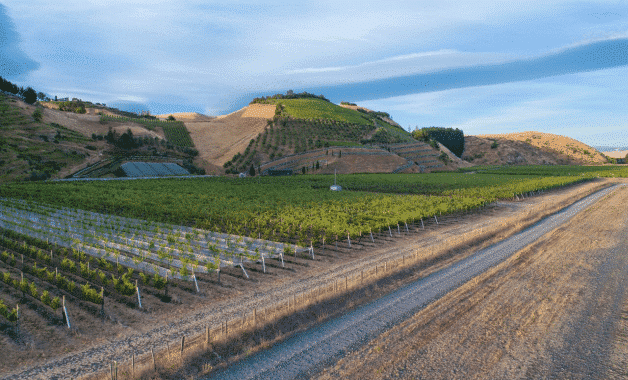At Stonecroft, all of our wines come exclusively from vineyards in the Gimblett Gravels Winegrowing District — something that makes us unique! We own just 3.0 hectares ourselves on Mere Road — a compact, hands-on vineyard we call the Mere Road block — and also source fruit around Roys Hill and the highly regarded Cornerstone Vineyard. All of these sites sit on the same special stretch of stony land that defines the Gimblett Gravels.
The soils here are pretty remarkable. Back in 1867, this land was actually part of the Omahu channel of the Ngaruroro River — it was underwater. As the river slowed down, it dropped its heavier sediments like gravels and coarse sands around Roys Hill, while the finer silts and clays drifted further downstream onto the wider Heretaunga Plains. That’s why the Gimblett Gravels District is such a compact and unique area — and why the soils, known as Omahu Gravels, are so prized for growing great wine.
Our home block was originally planted by Dr. Alan Limmer, who helped pioneer Syrah in New Zealand. We’ve still got some of those original vines, alongside newer plantings of Syrah, Cabernet Sauvignon, and a small parcel of Chardonnay. The soil here has just a touch more silt than some nearby blocks, which gives it a bit more natural vigour — though with the naturally low fertility of these gravels, everything is still low-cropping and concentrated.
Across all the vineyards we work with, we are 100% certified under Sustainable Winegrowing New Zealand (SWNZ) — a respected programme that guides everything from how we care for our vines to how we support our team and the environment. We aim to grow grapes in a way that’s thoughtful, responsive, and gives the vines the best chance at a long, healthy life.
We do most of our vineyard work by hand — pruning, leaf plucking, green thinning — and keep yields low so the fruit is balanced and expressive. While we do use machinery where it makes sense, the vineyard is very much a hands-on place.
We’re always looking to evolve and improve. That might mean applying regenerative practices where they make sense, or simply listening closely to the vines and the season. After all, we’re not just growing grapes — we’re growing the foundation of everything we do



